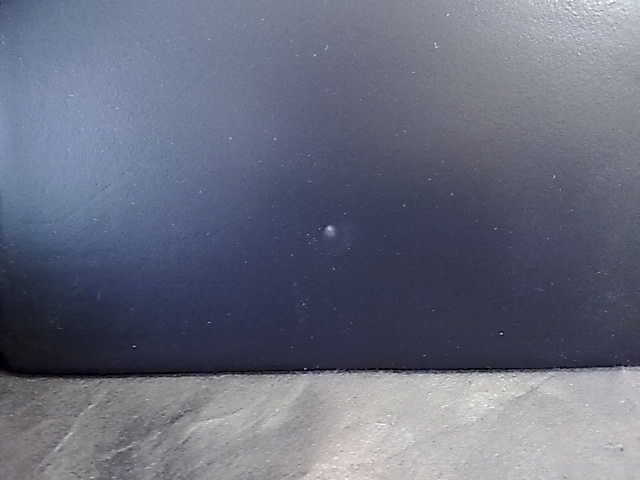Posted By: Swiss_Robert
Spray painting: Magic dots of evil - 12/20/10 11:38 AM
I've rebuild the dash of my 1970 Challenger and I painted the lower metal surfaces using a simple black spray paint (semimatt). That was no problem with the dash itself...
When coming to spray the sheetmetal doors for the ashtray and for the glovebox - they turn me mad!
I sanded them down, washed with thinner and sprayed a primer on that based on synthetic resin. The primer covered proper - still no problem.
But when I spray the semimatt black paint on, I get some "dots" in the surface that "eat" the paint - throught the primer! It looks like small vulcanos. Where the primer was before, naked metal appears...
Then I grinded it away again, primed again, sprayed semimatt again - and it happens again!!!
I talk about one or two such "dots" on each part - as on the pic below.
To be honest: This black semimatt paint was just easy available in the supermarket and it does not say on the can what it really is - but I use it for years and paint everything and I cannot remember that I had those dots ever before... just on these two pieces of sheetmetal.
What's that???

When coming to spray the sheetmetal doors for the ashtray and for the glovebox - they turn me mad!
I sanded them down, washed with thinner and sprayed a primer on that based on synthetic resin. The primer covered proper - still no problem.
But when I spray the semimatt black paint on, I get some "dots" in the surface that "eat" the paint - throught the primer! It looks like small vulcanos. Where the primer was before, naked metal appears...
Then I grinded it away again, primed again, sprayed semimatt again - and it happens again!!!
I talk about one or two such "dots" on each part - as on the pic below.
To be honest: This black semimatt paint was just easy available in the supermarket and it does not say on the can what it really is - but I use it for years and paint everything and I cannot remember that I had those dots ever before... just on these two pieces of sheetmetal.
What's that???


